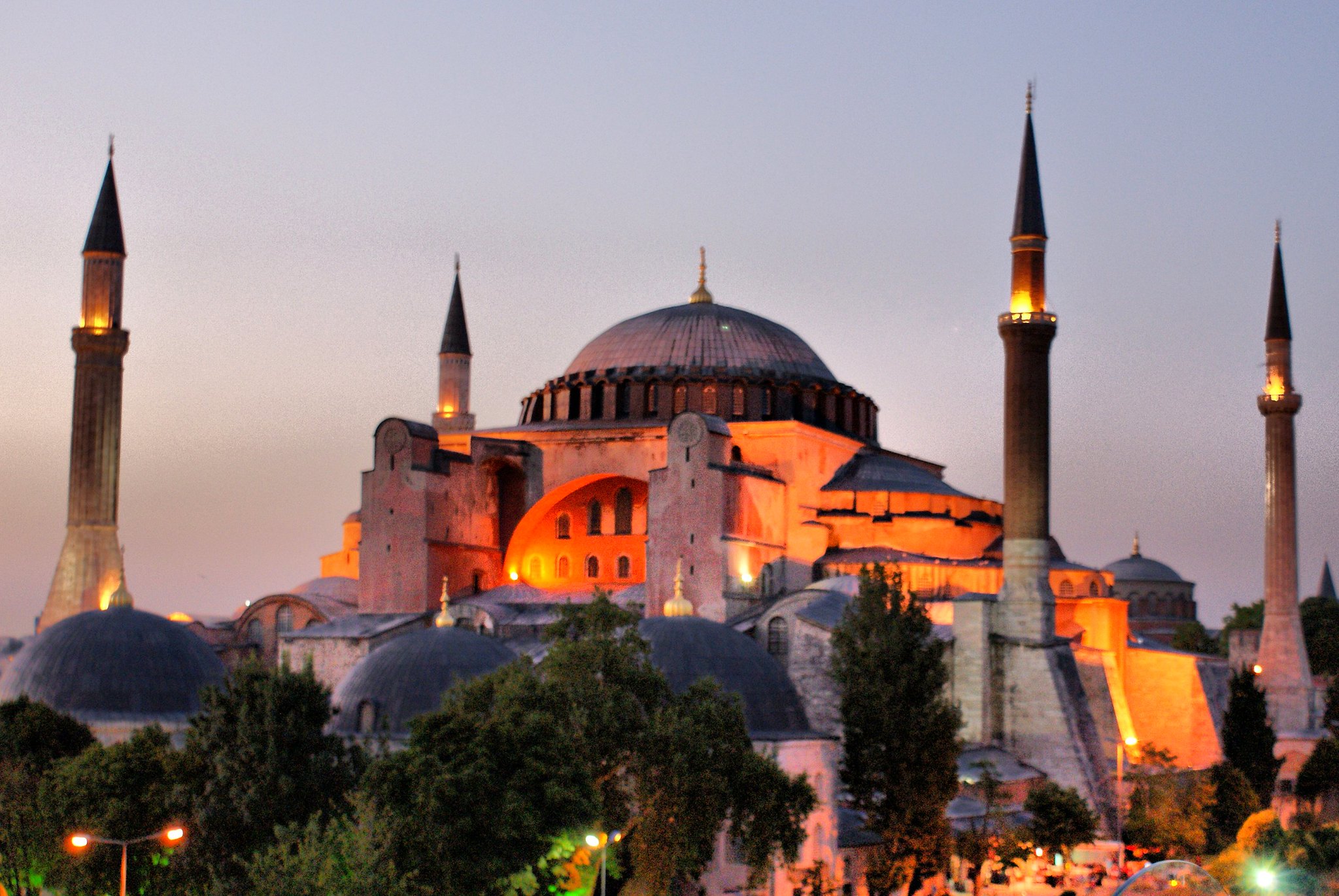Hagia Sophia, located in Istanbul, Turkey, is an iconic architectural marvel with a rich history spanning nearly 1,500 years. Originally constructed as a Byzantine cathedral in 537 AD under Emperor Justinian I, it served as the centerpiece of the Eastern Orthodox Church for centuries. The building is renowned for its massive dome, intricate mosaics, and blend of Byzantine and Islamic architectural elements. After the Ottoman conquest of Constantinople in 1453, it was converted into a mosque.
In 1935, Hagia Sophia became a museum, showcasing its diverse cultural heritage. In 2020, it was reconverted into a mosque while maintaining its status as a UNESCO World Heritage site. Hagia Sophia remains a symbol of religious and cultural significance, attracting millions of visitors annually who marvel at its grandeur and historical importance.
Hagia Sophia’s iconic dome has captivated visitors and architects alike for centuries, standing as a testament to human ingenuity and architectural prowess. This marvel of engineering, which has weathered the test of time, continues to inspire awe and wonder in all who gaze upon it.
When Emperor Justinian I commissioned the construction of Hagia Sophia in 532 CE, he envisioned a structure that would surpass all others in grandeur and beauty. The architects Anthemius of Tralles and Isidore of Miletus rose to the challenge, designing a dome that would become the crowning glory of Byzantine architecture.
The original dome, measuring an impressive 31 meters in diameter and soaring 55 meters above the ground, was a revolutionary feat for its time. However, this architectural triumph was not without its challenges. Just two decades after its completion, the dome partially collapsed due to earthquakes in 558 CE. Undeterred, the Byzantine Empire set about rebuilding it, this time with a slightly steeper profile to enhance its stability.
Throughout the centuries, Hagia Sophia’s dome has undergone numerous repairs and modifications. Each intervention has left its mark on the structure, creating a rich tapestry of architectural history. The dome we see today is a result of these cumulative efforts, blending Byzantine, Ottoman, and modern engineering techniques.
One of the most fascinating aspects of the dome is its clever use of pendentives – triangular sections of vaulting that allow the circular base of the dome to rest on a square foundation. This innovative solution enabled the architects to create a sense of lightness and spaciousness within the building, despite the dome’s massive size and weight.
The dome’s visual impact is further enhanced by its forty windows, which form a ring around its base. These openings not only provide structural support by reducing the dome’s weight but also create a stunning lighting effect. As sunlight streams through these windows, it seems as if the dome is floating on a ring of light, adding to the ethereal atmosphere of the interior.
Over the years, the dome has become a symbol of architectural achievement and cultural significance. Its influence can be seen in countless buildings around the world, from the great mosques of the Islamic world to Renaissance cathedrals in Europe. Even modern architects continue to draw inspiration from its elegant design and innovative engineering.
Despite its age, Hagia Sophia’s dome continues to face challenges. The structure is constantly monitored for signs of stress or damage, and ongoing conservation efforts are essential to preserve this architectural treasure for future generations. Seismic activity remains a concern, given Istanbul’s location in an earthquake-prone region.
In recent years, advanced technology has allowed researchers to gain new insights into the dome’s construction and structural behavior. 3D scanning and computer modeling have revealed previously unknown details about its geometry and load-bearing capabilities, helping conservators develop more effective preservation strategies.
As Hagia Sophia has transitioned from a Byzantine church to an Ottoman mosque, then to a museum, and most recently back to a mosque, its dome has remained a constant presence, witnessing the ebb and flow of history. It stands as a reminder of the enduring power of human creativity and the ability of great architecture to transcend time and cultural boundaries.
Visitors to Hagia Sophia today can still experience the same sense of wonder that has captivated people for nearly 1,500 years. As they crane their necks to take in the vast expanse of the dome above, they become part of a long tradition of admirers, connecting the past with the present and ensuring that the legacy of this architectural marvel will continue to inspire for generations to come.
Hagia Sophia stands as a testament to architectural brilliance and cultural synthesis, embodying the rich history of Istanbul and the broader Mediterranean world. Its transformation from a Byzantine cathedral to an Ottoman mosque and later a museum reflects the complex religious and political shifts in the region. Today, as a mosque once again, it continues to inspire awe with its massive dome, intricate mosaics, and Islamic calligraphy. Hagia Sophia remains a symbol of artistic achievement, religious significance, and the enduring legacy of empires, attracting millions of visitors who marvel at its beauty and contemplate its storied past.

